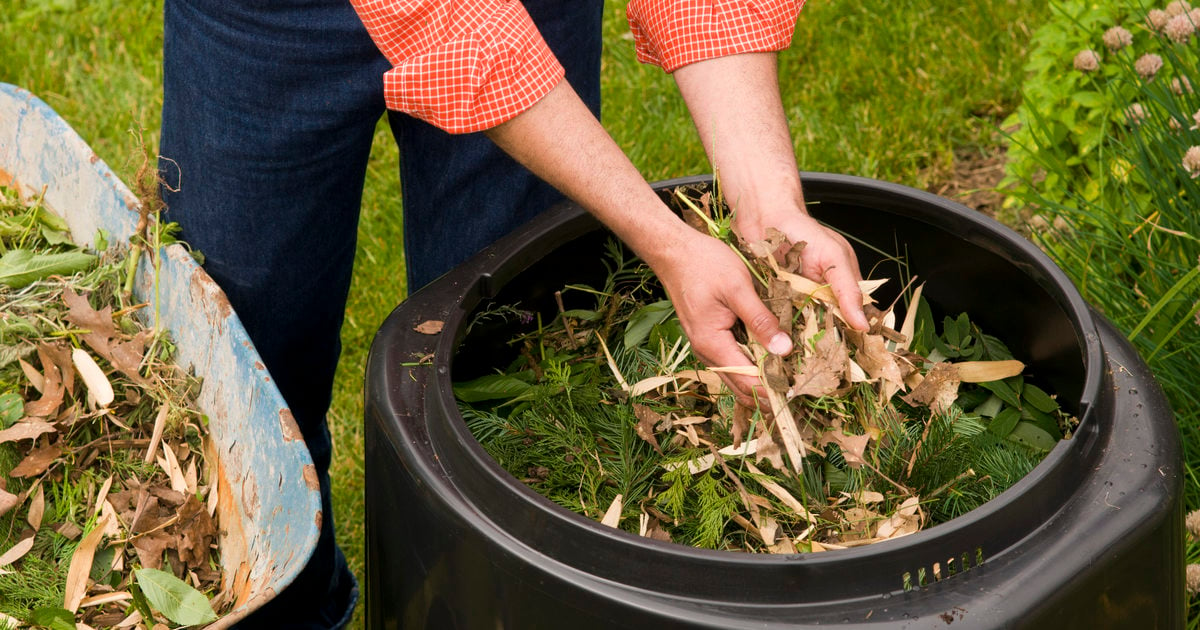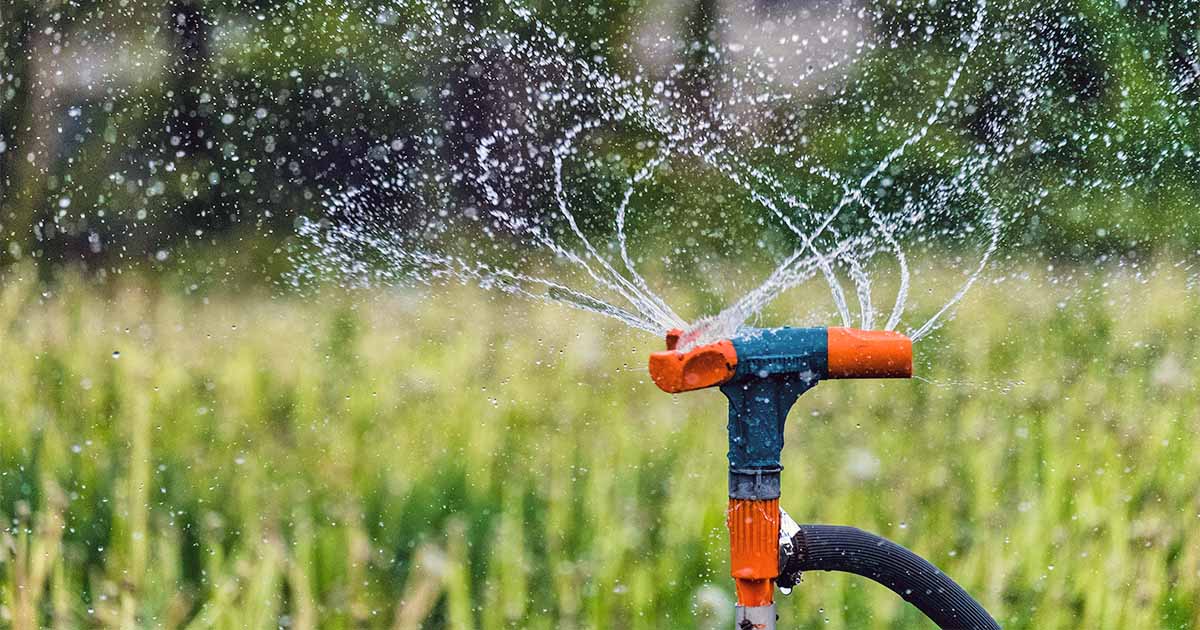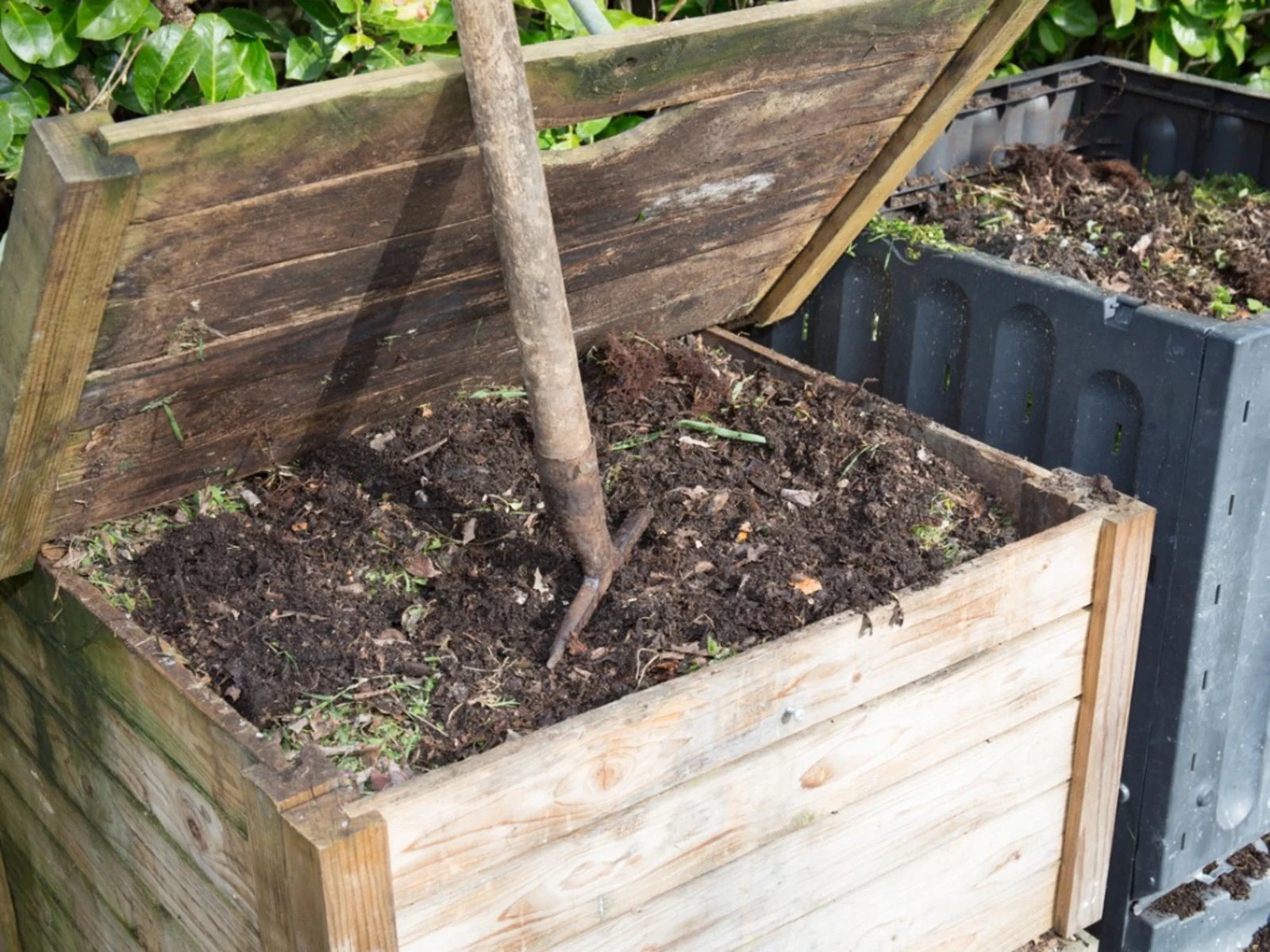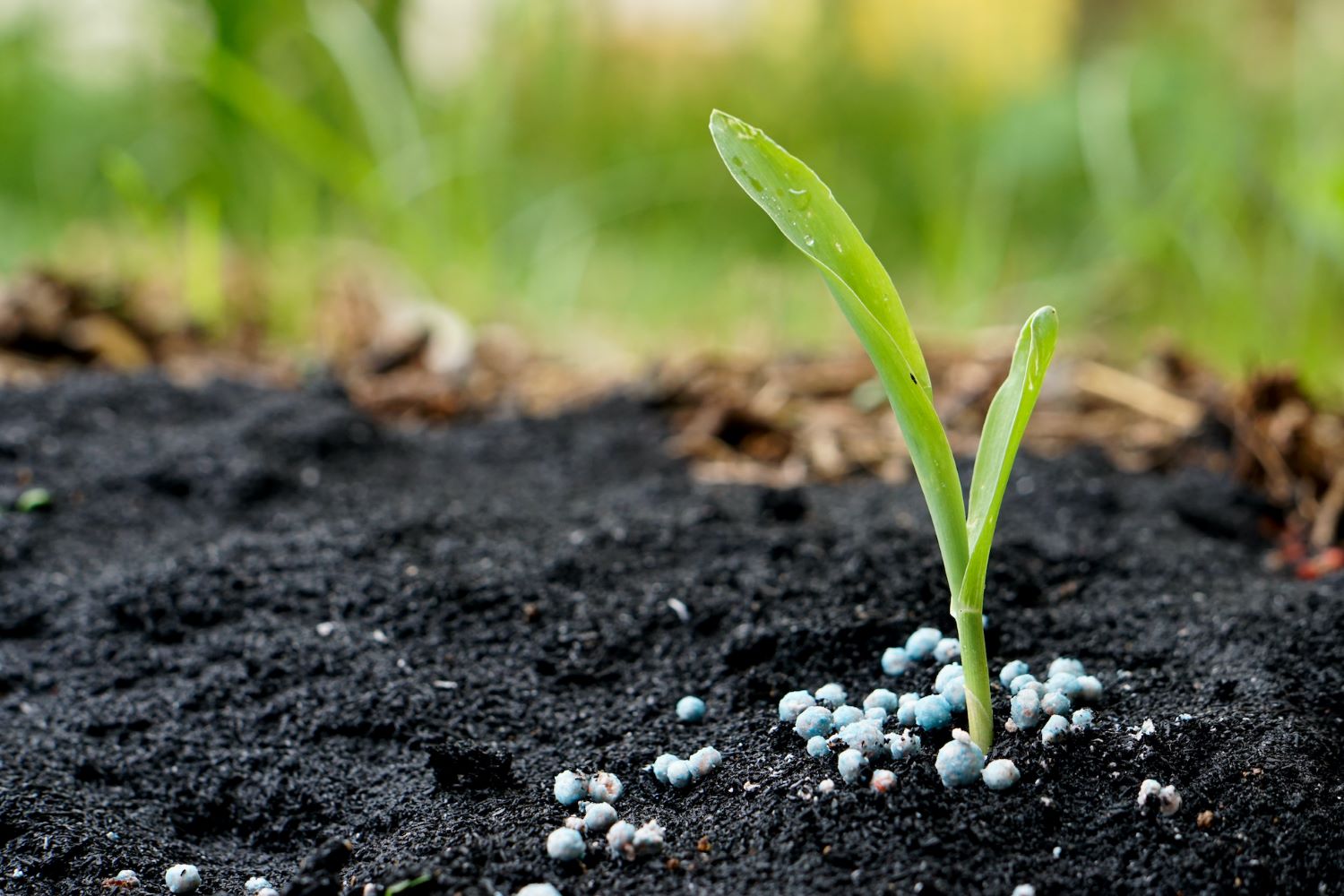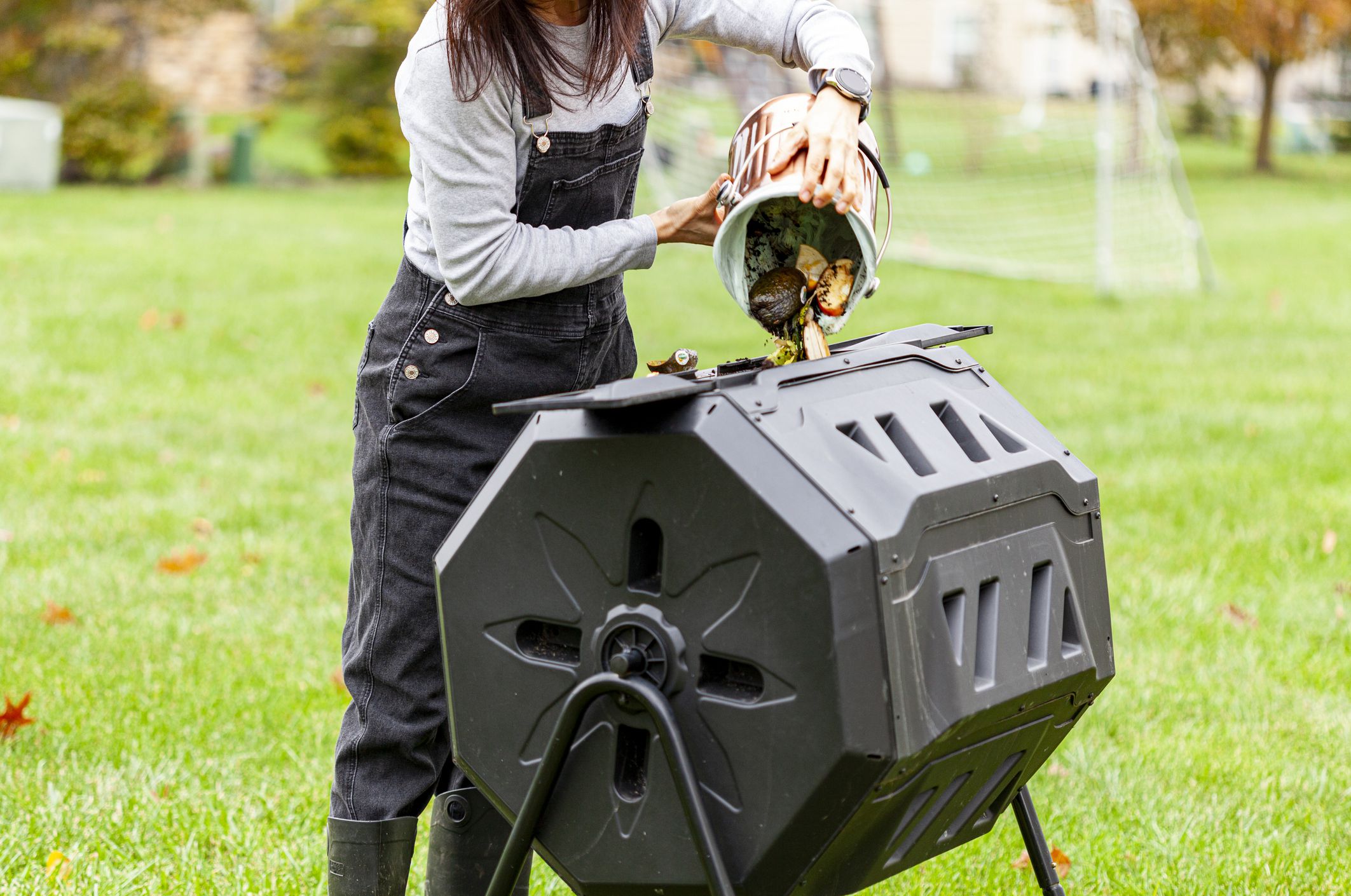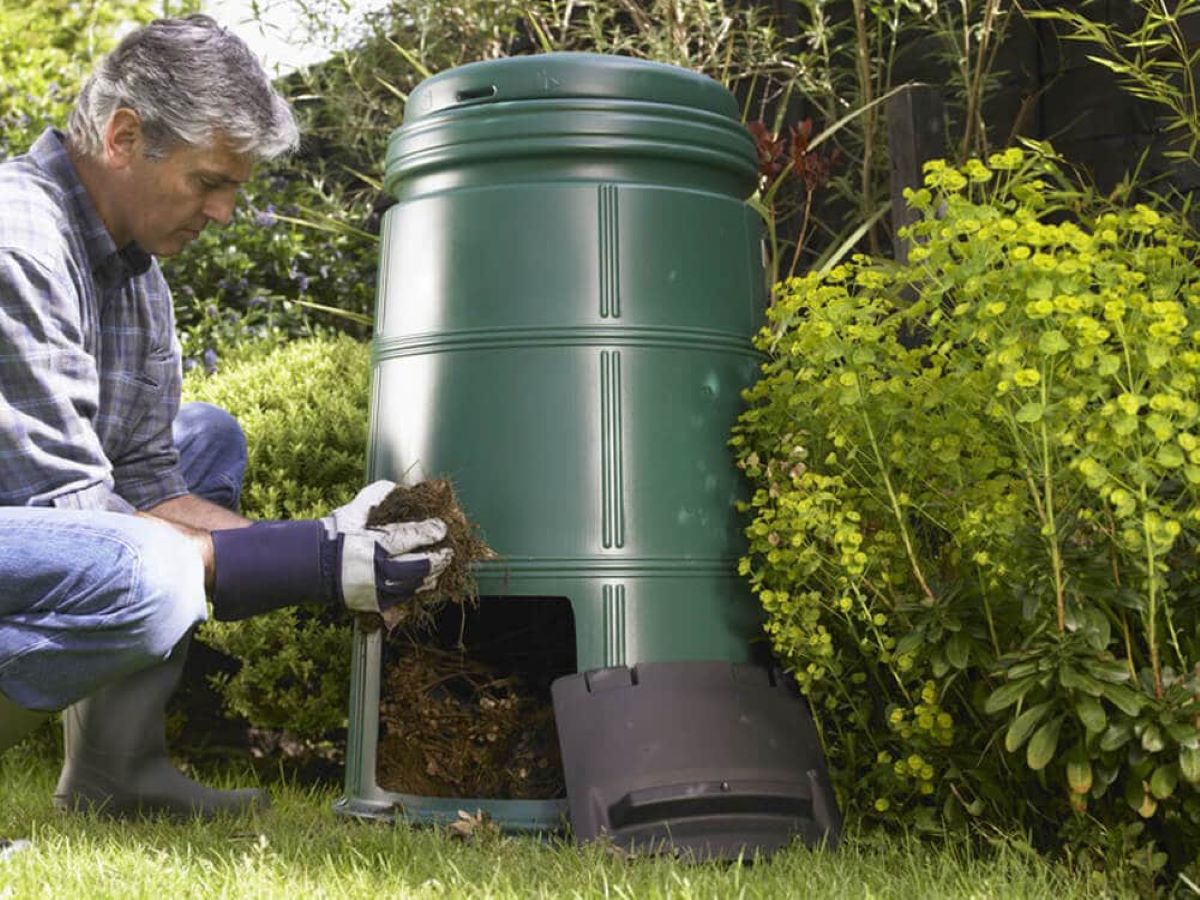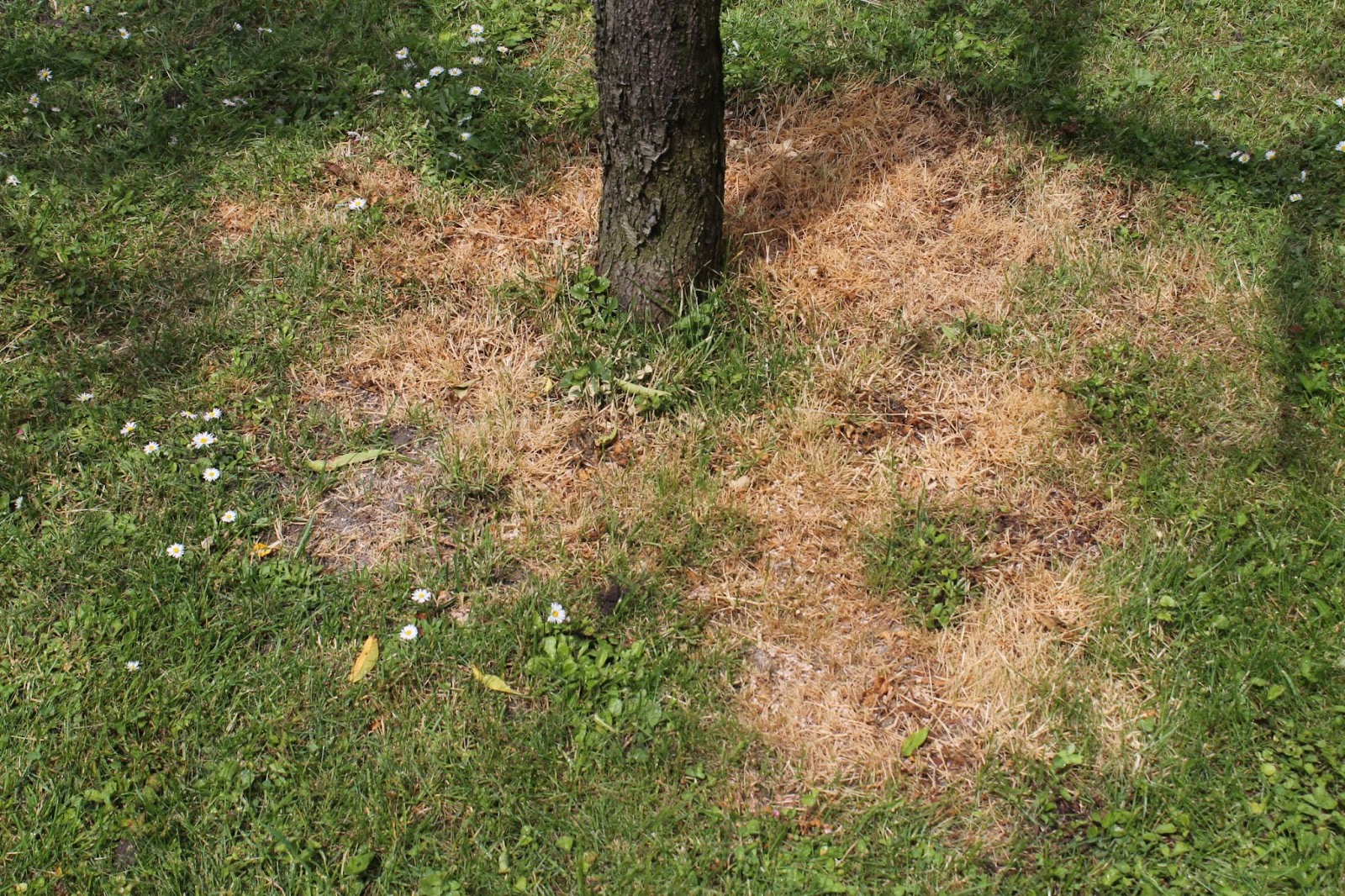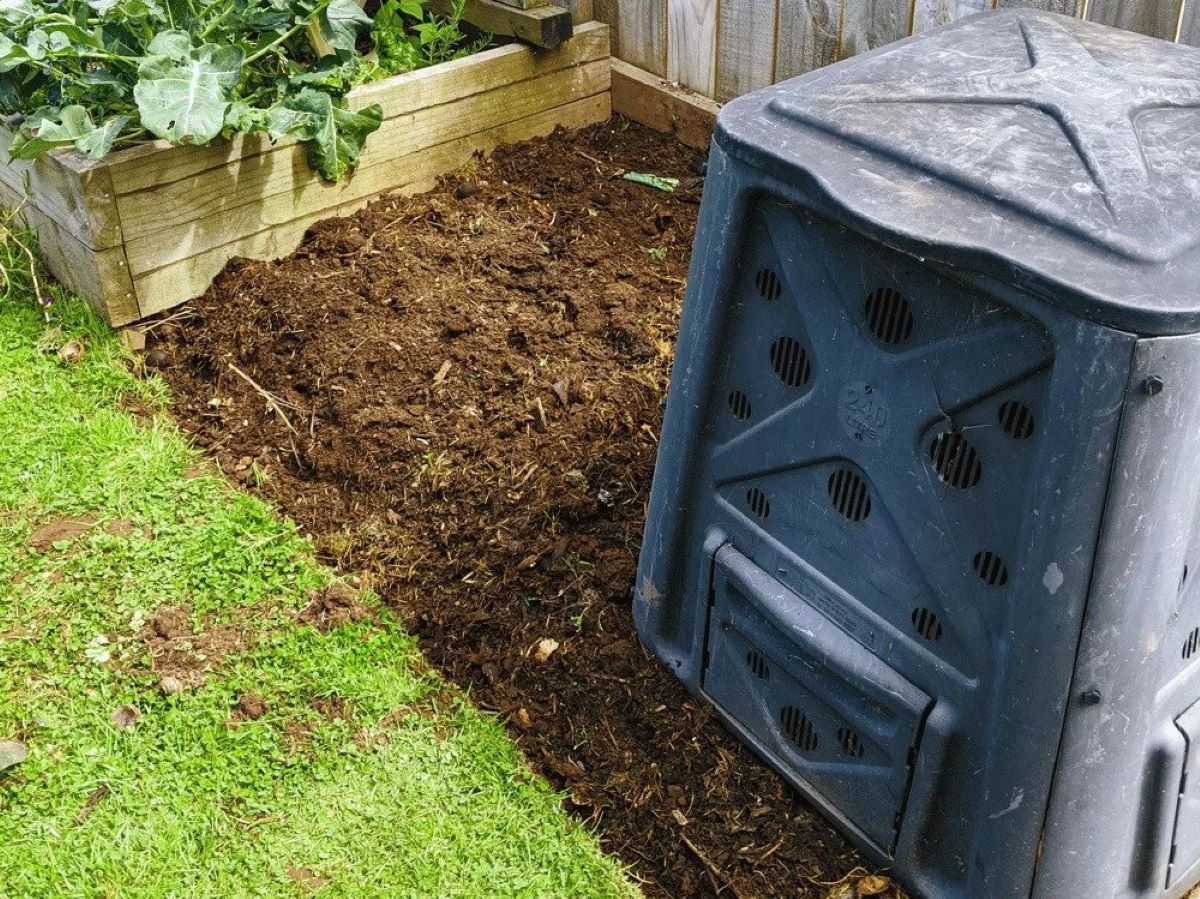Home>Gardening Tips and Tricks>Eco-Friendly Gardening>How Does A Compost Bin Work


Eco-Friendly Gardening
How Does A Compost Bin Work
Modified: January 22, 2024
Discover the eco-friendly way to garden with a compost bin. Learn how these bins work and transform your kitchen waste into nutrient-rich soil for your plants.
(Many of the links in this article redirect to a specific reviewed product. Your purchase of these products through affiliate links helps to generate commission for Chicagolandgardening.com, at no extra cost. Learn more)
Table of Contents
Introduction
Welcome to the world of eco-friendly gardening! In an era where environmental consciousness is on the rise, more and more people are looking for ways to reduce their carbon footprint and make a positive impact on the planet. One impactful way to do this is through eco-friendly gardening practices, such as using a compost bin.
Composting is not a new concept. In fact, it has been practiced for centuries as a means of naturally recycling organic waste into nutrient-rich soil. However, with the increasing interest in sustainable living, composting has gained popularity as an accessible and practical solution for individuals and communities alike.
A compost bin is a simple and effective tool that allows you to harness the power of nature to transform kitchen scraps, yard waste, and other organic materials into a valuable resource for your garden. By composting, you can divert waste from landfills, reduce the need for chemical fertilizers, and promote healthier soil and plant growth.
In this article, we will explore the world of compost bins, their benefits, the different types available, and how to set up and maintain your own. Whether you are a seasoned gardener or a beginner with a green thumb, you will find valuable information and practical tips to help you on your eco-friendly gardening journey.
So, grab your gardening gloves and let’s dive into the wonderful world of composting and how a compost bin can revolutionize the way you garden!
What is a Compost Bin?
A compost bin is a container specifically designed for the purpose of composting. It provides a controlled environment that facilitates the decomposition of organic matter into nutrient-rich compost. Compost bins come in various shapes and sizes to suit different needs and spaces, ranging from small bins suitable for apartment balconies to larger bins for spacious gardens.
Compost bins are typically made of durable materials such as plastic, wood, or metal. They feature openings or lids for easy access and ventilation, which is crucial for the composting process. Some compost bins have multiple compartments or sections, allowing for batch composting or the separation of different materials.
Composting is a natural process that transforms organic waste into a dark, crumbly substance called compost. This is achieved through the activity of microorganisms, such as bacteria, fungi, and worms, which break down the organic materials into simpler forms. The composting process requires the right balance of carbon-rich (or “brown”) materials, such as dry leaves and woody trimmings, and nitrogen-rich (or “green”) materials, such as kitchen scraps and grass clippings.
A compost bin serves several important functions in the composting process. Firstly, it helps contain and manage the organic materials, preventing them from scattering or attracting pests. Secondly, it provides insulation, which helps maintain the ideal temperature range for optimal decomposition. Lastly, it allows for proper airflow, ensuring that oxygen is available to the microorganisms involved in the composting process.
Compost bins have become popular among gardeners and environmentally-conscious individuals for several reasons. They offer a convenient and efficient way to convert organic waste into a valuable resource, reducing the need for chemical fertilizers and diverting waste from landfills. Using a compost bin also helps to improve soil structure, fertility, and moisture retention, resulting in healthier plants and a thriving garden.
Now that you have a better understanding of what a compost bin is, let’s explore the benefits of using one in more detail. Whether you have a small urban garden or a larger outdoor space, a compost bin can be a game-changer in your eco-friendly gardening journey.
Benefits of Using a Compost Bin
Using a compost bin offers numerous benefits for both the environment and your garden. Let’s take a closer look at why composting with a bin is a sustainable and advantageous practice.
1. Waste Reduction: Composting allows you to divert a significant amount of organic waste from ending up in landfills. By composting food scraps, yard trimmings, and other organic materials, you reduce the volume of waste that contributes to greenhouse gas emissions and environmental pollution.
2. Nutrient-Rich Soil Amendment: Compost produced in a compost bin is a natural and nutrient-rich soil amendment. It enriches the soil with essential nutrients, increases its water-holding capacity, and improves overall soil structure. By adding compost to your garden, you provide plants with a healthy growing environment and reduce the need for synthetic fertilizers.
3. Reduced Need for Chemical Fertilizers: Compost is a natural alternative to chemical fertilizers. It releases nutrients slowly and in a form that plants can readily absorb, promoting healthy growth without the risk of chemical runoff polluting nearby water sources.
4. Improved Soil Health: Compost enhances soil health by improving its structure, texture, and fertility. It helps sandy soils retain moisture and improves drainage in clayey soils. Additionally, compost encourages beneficial microbial activity in the soil, which further enhances nutrient availability for plants.
5. Increased Biodiversity: Compost supports the growth of beneficial microorganisms and earthworms in the soil, which contribute to the overall biodiversity of your garden. These organisms aid in soil aeration, nutrient cycling, and the breakdown of organic matter, creating a balanced ecosystem for healthy plant growth.
6. Water Conservation: Compost-amended soil has better water retention properties, reducing water runoff and the need for frequent irrigation. This not only conserves water but also helps plants withstand periods of drought by maintaining adequate soil moisture.
7. Cost Savings: Using compost produced in your own compost bin can lead to significant cost savings. You reduce the need to purchase expensive synthetic fertilizers and soil amendments, and your plants are likely to require fewer pesticides due to their improved health and resilience.
8. Environmental Sustainability: Composting with a bin aligns with principles of environmental sustainability. By reducing waste, conserving resources, and promoting natural soil fertility, you play a role in conserving the planet’s resources and mitigating climate change.
As you can see, the benefits of using a compost bin are wide-ranging and impactful. From waste reduction to soil improvement and cost savings, composting brings positive change both at a personal level and for the health of the planet. Now that we understand the advantages, let’s explore the different types of compost bins available to help you get started.
Types of Compost Bins
Compost bins come in various shapes, sizes, and designs to suit different gardening needs and space constraints. Here are some of the most common types of compost bins:
1. Traditional Bin: This type of compost bin is typically made of plastic or wood and comes in various sizes. It has a lid or removable panels for easy access to the compost. Traditional bins are versatile and can be placed in a corner of your yard or garden.
2. Tumbler Bin: Tumbler bins consist of a drum or cylindrical container mounted on a stand or frame. They are designed to make composting easier and more efficient by allowing you to easily turn and mix the compost with a rotating mechanism. Tumbler bins are ideal for those with limited space or mobility restrictions, as they are compact and require less physical effort than traditional bins.
3. Worm Bin: Also known as vermicomposting bins, worm bins utilize the power of worms to break down organic waste. They are typically shallow containers with multiple compartments, allowing you to add organic waste and worms to one section while the finished compost is harvested from another section. Worm bins are excellent for small-scale composting and can be kept indoors or in a sheltered outdoor area.
4. DIY Bin: If you enjoy DIY projects and want to save money, a DIY compost bin might be the perfect option for you. These bins can be made from repurposed materials such as wooden pallets, plastic storage containers, or even old trash cans. DIY bins offer flexibility in size and design, allowing you to customize them based on your specific needs and available resources.
5. Sheet Composting: Sheet composting, also known as Lasagna gardening, is a method that eliminates the need for a traditional compost bin. It involves layering organic materials directly on the soil surface, including kitchen scraps, leaves, grass clippings, and cardboard. Over time, these layers break down and enrich the soil. Sheet composting is ideal for large areas or when you want to compost directly in your garden beds.
When choosing a compost bin, consider factors such as the amount of waste you generate, available space, convenience, and personal preferences. Remember, the type of bin you choose should suit your lifestyle and make the composting process as easy and efficient as possible.
Now that we’ve explored the different types of compost bins, let’s move on to the next step: setting up your compost bin and getting started with the composting process.
Setting Up a Compost Bin
Setting up a compost bin is a straightforward process that requires a few key steps to ensure successful composting. Follow these guidelines to get your compost bin up and running:
1. Choose the Location: Select a suitable location for your compost bin. It should be easily accessible, receive adequate sunlight, and have good drainage. Avoid placing the bin directly on concrete or pavement, as this can hinder the composting process by impeding the circulation of air and moisture.
2. Prepare the Base: Before placing your compost bin, it’s a good idea to prepare the ground beneath it. Lay down a layer of wire mesh or bricks to allow for proper airflow and prevent pests from entering the bin. This will also help with drainage.
3. Add Brown and Green Materials: To start the composting process, add a balanced mix of carbon-rich “brown” materials, such as dry leaves, twigs, and shredded newspaper, and nitrogen-rich “green” materials, such as fruit and vegetable scraps, grass clippings, and coffee grounds. Aim for a ratio of about 3 parts brown to 1 part green to create the ideal conditions for decomposition.
4. Maintain Moisture: Compost needs adequate moisture to support the breakdown of organic matter. Water the compost pile regularly to keep it moist, but not overly wet. If the pile becomes too dry, it will slow down decomposition, whereas excessive moisture can lead to unpleasant odors and the growth of anaerobic bacteria.
5. Turn or Mix the Compost: Regularly turning or mixing the compost helps to distribute moisture and oxygen, which are essential for the decomposition process. This can be done using a pitchfork, shovel, or by using a tumbler bin that allows for easy rotation. Turning the compost also helps to speed up decomposition and ensure even decomposition of the materials.
6. Monitor the Temperature: Composting generates heat as microorganisms break down the organic matter. It’s important to monitor the internal temperature of your compost bin, as it should ideally reach a range of 130-150°Fahrenheit (55-65°C). This temperature range helps kill weed seeds and pathogens, ensuring that the compost is safe to use.
7. Add to the Compost Bin Regularly: As you continue your gardening and household activities, add organic waste to your compost bin regularly. Remember to maintain the balance of brown and green materials, ensuring a healthy mix of carbon and nitrogen for optimal decomposition.
8. Be Patient: Composting is a natural process that takes time. Depending on the materials used, climate conditions, and maintenance practices, it can take anywhere from a few months to a year for the compost to fully mature. Be patient and continue to tend to your compost bin regularly.
By following these steps, you’ll be able to set up and maintain a functioning compost bin. Remember, composting is an ongoing process, and with time and practice, you’ll become more familiar with the needs of your compost pile.
Now that you’re familiar with the setup process, let’s discuss the types of organic materials that are suitable for composting.
Materials Suitable for Composting
Composting relies on a balanced mix of organic materials to facilitate the decomposition process and create nutrient-rich compost. Here is a list of materials that are suitable for composting:
1. Fruit and Vegetable Scraps: Kitchen scraps such as fruit and vegetable peels, cores, and trimmings are excellent additions to your compost bin. Avoid adding large quantities of citrus peels or excessively oily food scraps, as they can slow down decomposition and attract pests.
2. Coffee Grounds and Tea Leaves: Used coffee grounds and tea leaves are rich in nitrogen and provide a great boost to your compost. They also help to balance the carbon-to-nitrogen ratio in the pile.
3. Yard Waste: Grass clippings, leaves, small branches, and plant trimmings from your garden can all be composted. However, be mindful not to include weed seeds or invasive plant species that can spread in your compost and garden.
4. Shredded Paper and Cardboard: Paper-based materials, such as newspaper, shredded office paper, and cardboard, can be added to the compost. Tear them into smaller pieces to speed up the decomposition process.
5. Dry Leaves and Twigs: Fallen leaves and small twigs are excellent sources of carbon in your compost. They help to create air pockets in the pile and balance the moisture content.
6. Eggshells: Crushed eggshells are a valuable source of calcium for your compost. They also aid in balancing the pH level in the pile.
7. Manure: Animal manure, such as cow, horse, or chicken, is a rich source of nitrogen that can accelerate the composting process. However, be cautious of the source of the manure, as it should come from herbivorous animals and should be properly composted to avoid any risks of pathogens.
8. Seaweed: If you have access to seaweed, it can make a great addition to your compost pile. Rinse it thoroughly to remove excess salt before adding it in.
Remember to chop or shred larger materials to facilitate faster decomposition. It’s also important to avoid adding meats, dairy products, oily foods, and pet waste to your compost bin, as these can attract pests or introduce harmful bacteria into the pile.
By incorporating a diverse range of these organic materials into your compost bin, you’ll create a well-balanced environment that supports the decomposition process and produces nutrient-rich compost for your garden.
Now that you know what materials are suitable for composting, let’s delve deeper into how a compost bin actually works to break down these organic materials into nutrient-rich compost.
How Does a Compost Bin Work?
A compost bin creates the ideal environment for the natural process of decomposition to occur. By providing the right conditions of moisture, oxygen, and temperature, the compost bin enables the breakdown of organic materials into nutrient-rich compost. Here’s a step-by-step breakdown of how a compost bin works:
1. Microorganisms: The composting process begins with the activity of microorganisms, such as bacteria and fungi, present in the organic materials. These microorganisms feed on the organic matter, breaking it down into simpler compounds.
2. Carbon and Nitrogen: A balance between carbon-rich (brown) and nitrogen-rich (green) materials is crucial for successful composting. The carbon provides energy for the microorganisms, while the nitrogen supports their growth and reproduction. The ratio of carbon to nitrogen in the compost pile should ideally be around 25 to 30 parts carbon to 1 part nitrogen.
3. Water and Moisture: Proper moisture content is essential for the composting process. The compost pile should be moist, similar to a wrung-out sponge. If the pile is too dry, decomposition slows down, whereas excessive moisture can lead to anaerobic conditions. Regular watering and monitoring of moisture levels are necessary to maintain the proper balance.
4. Oxygen and Aeration: Oxygen is vital for the activity of aerobic microorganisms responsible for rapid decomposition. The compost bin should have ample airflow to supply oxygen to the microorganisms. Regularly turning or mixing the compost pile helps maintain good aeration, prevents odors, and speeds up the composting process.
5. Temperature: Composting generates heat as microorganisms break down the organic matter. The compost pile should ideally reach a temperature range of 130-150°Fahrenheit (55-65°C). This heat promotes the rapid breakdown of materials, kills weed seeds and pathogens, and accelerates the composting process.
6. Decomposition Stages: Composting progresses through different stages. Initially, the materials heat up as decomposition is initiated. During this thermophilic stage, the temperature rises, and certain pathogens and weed seeds are killed. As the decomposition continues, the pile cools down and enters the mesophilic stage, where different microorganisms decompose the organic matter further. Finally, the compost matures during the curing stage, where it stabilizes and becomes nutrient-rich.
7. Time and Patience: Composting is a natural process that takes time and patience. The composting period can range from a few months to a year, depending on various factors such as the materials used, environmental conditions, and maintenance practices. Regularly tending to the compost pile, turning it, and monitoring its moisture and temperature will help speed up the process.
By understanding and providing the necessary components for composting – microorganisms, carbon and nitrogen, water and moisture, oxygen and aeration, and the right temperature – a compost bin creates an ideal environment for organic materials to decompose into nutrient-rich compost.
Now that we have explored how a compost bin works, let’s discuss some important factors that can affect the composting process.
Factors Affecting Composting Process
Several factors can influence the composting process and its effectiveness. By understanding these factors, you can optimize your composting efforts and achieve better results. Let’s take a closer look at the factors that impact the composting process:
1. Carbon-to-Nitrogen Ratio: Ensuring a proper balance between carbon-rich (brown) and nitrogen-rich (green) materials is crucial. The ideal carbon-to-nitrogen ratio is around 25 to 30 parts carbon to 1 part nitrogen. Too much carbon can slow down decomposition, while too much nitrogen can lead to odors and excessive heat.
2. Moisture Content: Compost microorganisms require adequate moisture to thrive. The compost pile should be moist, similar to a wrung-out sponge. If the pile is too dry, decomposition slows down. On the other hand, excessive moisture can lead to a lack of oxygen, causing anaerobic conditions. Regularly monitor and adjust moisture levels to maintain optimal conditions.
3. Oxygen and Aeration: Oxygen is essential for the activity of aerobic microorganisms. Good aeration promotes decomposition and prevents unpleasant odors. Turning or mixing the compost pile regularly provides fresh oxygen and helps distribute moisture and heat throughout the pile.
4. Particle Size: Cutting or shredding organic materials into smaller pieces increases their surface area, allowing for faster decomposition. Smaller particles also enhance airflow and improve the overall structure of the compost pile.
5. Temperature: The composting process generates heat, which is crucial for rapid decomposition. The temperature range of 130-150°F (55-65°C) promotes the activity of microorganisms, kills weed seeds and pathogens, and accelerates the composting process. However, extreme temperatures can harm beneficial microorganisms, so it is essential to monitor and maintain the temperature within the ideal range.
6. Environmental Conditions: Factors such as temperature, moisture, and airflow are influenced by the surrounding environment. Hot and dry climates may require additional watering of the compost pile, while cold climates may require insulation to prevent freezing. Consider the environmental conditions in your specific region and make necessary adjustments to optimize the composting process.
7. Size of Compost Pile: The size of the compost pile can impact the composting process. A larger pile can generate and retain more heat, optimizing decomposition. However, larger piles may require more effort to turn and maintain proper moisture and aeration levels.
8. Compost Mix: Using a diverse mix of organic materials in your compost pile can improve its quality. Different materials provide a variety of nutrients and microorganisms, enhancing the overall nutrient content of the compost. Aim to include a mix of kitchen scraps, yard waste, and other organic materials to create a balanced compost mix.
By understanding and managing these factors, you can create an ideal environment for the composting process to thrive. Regular monitoring, adjusting, and maintaining optimal conditions will result in faster decomposition and the production of high-quality compost for your garden.
Now that we have explored the factors that impact composting, let’s discuss some tips for maintaining a compost bin to ensure a successful composting experience.
Tips for Maintaining a Compost Bin
Maintaining a compost bin involves regular care and attention to ensure optimal decomposition and the production of nutrient-rich compost. Here are some essential tips to help you maintain your compost bin:
1. Balance the Compost: Maintain a proper balance between carbon-rich (brown) and nitrogen-rich (green) materials. Add equal amounts of both to ensure a healthy carbon-to-nitrogen ratio and promote efficient decomposition. Adjust the mix as needed to maintain the balance.
2. Chop and Shred Materials: To speed up decomposition, chop or shred larger organic materials into smaller pieces. This increases the surface area available for microbial activity and enhances airflow within the compost pile.
3. Regularly Turn or Mix: Turning or mixing the compost pile helps distribute moisture, oxygen, and microorganisms throughout the pile. Aim to turn the compost every few weeks or whenever the temperature or moisture levels need adjustment. Use a pitchfork, shovel, or tumbler bin to accomplish this.
4. Maintain Adequate Moisture: Monitor the moisture levels in your compost bin and adjust as necessary. The compost pile should be moist but not soggy. If the pile becomes too dry, it can slow down decomposition, while excessive moisture can lead to anaerobic conditions. Regular watering or covering the pile during rainy periods can help maintain optimal moisture levels.
5. Monitor Temperature: Keep an eye on the internal temperature of your compost pile. It should ideally reach and maintain a range of 130-150°Fahrenheit (55-65°C) during the active decomposition phase. Adjust the size of the pile, moisture levels, and the mix of materials to regulate the temperature as needed.
6. Control Pests and Odors: To prevent pests, such as rodents or flies, ensure that the compost pile is properly covered. Avoid adding meat, dairy products, oily foods, or pet waste that can attract pests or cause unpleasant odors. If odors or pests become a problem, adjust the carbon-to-nitrogen ratio or add a layer of carbon-rich materials to neutralize smells.
7. Add Amendments: Occasionally, you may need to add amendments to your compost pile to enhance its quality. This could include adding agricultural lime to adjust pH levels or adding crushed eggshells for calcium. Research specific amendments based on your compost’s needs and the requirements of your garden plants.
8. Patience and Monitoring: Composting is a slow and natural process. Be patient and monitor the progress of your compost pile regularly. Observe changes in temperature, moisture, and decomposition levels. With time and attention, you’ll gain a better understanding of how to optimize the composting process.
By following these maintenance tips, you can create ideal conditions for composting and ensure the production of high-quality compost. Remember that composting is a continuous process, and maintaining a consistent routine will yield the best results.
Now that you have a good handle on maintaining your compost bin, let’s discuss some common issues that may arise during the composting process and how to troubleshoot them effectively.
Troubleshooting Common Composting Issues
Composting is a natural process, and it’s common to encounter certain issues along the way. However, with a little troubleshooting, you can address and overcome these challenges to ensure the success of your composting efforts. Here are some common composting issues and how to troubleshoot them:
1. Slow Decomposition: If your compost pile is not decomposing as quickly as expected, it may be due to an imbalance in the carbon-to-nitrogen ratio, lack of moisture, inadequate airflow, or incorrect particle size. Ensure that you have a proper mix of carbon-rich (brown) and nitrogen-rich (green) materials. Adjust the moisture levels as needed, and turn or mix the compost regularly to improve airflow and break down materials into smaller pieces.
2. Foul Odors: Unpleasant odors emanating from the compost pile can be a sign of anaerobic conditions or an imbalance in the carbon-to-nitrogen ratio. To resolve this issue, turn and aerate the compost pile more frequently to increase oxygen levels. Add dry brown materials, such as leaves or shredded paper, to absorb excess moisture and neutralize the smell. Avoid adding meat, dairy products, or oily food scraps, as these can contribute to foul odors.
3. Excessive Moisture: If your compost pile is too wet, it can lead to anaerobic conditions, unpleasant odors, and slow decomposition. To address this issue, add dry brown materials, such as shredded leaves or straw, to absorb excess moisture. Consider covering the compost pile during rainy periods to prevent additional water from entering. Turning the pile more frequently can also help to aerate and dry out the compost.
4. Pests: Rodents, flies, or other pests can be attracted to your compost pile if it contains food scraps or if the pile is not properly covered. To deter pests, avoid adding meat, dairy products, or oily foods to the compost. Ensure that the compost bin is tightly covered and inaccessible to pests. If pest infestation persists, consider using a pest-resistant compost bin or adding a layer of wire mesh at the bottom of the bin to prevent pests from burrowing in.
5. Weed Seeds: Weed seeds can end up in your compost bin and survive the composting process. If you notice weeds sprouting in your compost, it is best to remove them before using the compost in your garden. It is recommended to regularly turn the compost pile to expose weed seeds to high temperatures and thoroughly decompose them.
6. Excessive Temperature: While a certain level of heat is beneficial for decomposition, excessively high temperatures can harm beneficial microorganisms and slow down the composting process. If the temperature climbs above the optimal range of 130-150°Fahrenheit (55-65°C), consider adjusting the pile’s size, adding more carbon-rich materials, or watering the pile to cool it down.
7. Lack of Compost: If you are not generating enough compost for your needs, consider increasing the size of your compost pile, adding more organic materials, or creating a second compost bin to accommodate larger volumes of waste. Remember to maintain the proper balance of carbon-rich and nitrogen-rich materials to ensure efficient decomposition.
8. Uncertain Maturity: It may be challenging to determine when your compost is fully mature and ready to use. As a general guideline, mature compost should have a dark brown color, a crumbly texture, and an earthy smell. If there are still recognizable materials in the compost, it may not be fully decomposed. If in doubt, you can always sieve the compost to remove any larger particles and use the fine compost for your gardening needs.
By troubleshooting common composting issues and making the necessary adjustments, you can overcome challenges and achieve successful composting. Remember that composting is a continuous learning process, and with time and experience, you’ll become more adept at troubleshooting and achieving optimal results.
Now that we have addressed common composting issues, let’s summarize what we have learned about eco-friendly gardening and the benefits of using a compost bin.
Conclusion
Embarking on the journey of eco-friendly gardening and using a compost bin can have a profound impact on both the environment and your garden. Composting allows you to transform everyday organic waste into nutrient-rich compost, reducing landfill waste and the need for synthetic fertilizers. By implementing the practices and tips discussed in this article, you can create a sustainable and thriving garden ecosystem.
A compost bin provides a controlled environment for the natural process of decomposition to occur. It relies on a delicate balance of carbon-rich (brown) and nitrogen-rich (green) materials, moisture, oxygen, and temperature. Regular monitoring, turning, and maintaining the proper conditions in your compost bin will result in faster decomposition and the production of nutrient-rich compost for your garden.
Throughout this article, we explored the benefits of using a compost bin, including waste reduction, improved soil health, water conservation, and cost savings. We also discussed the different types of compost bins available, setting up a compost bin, suitable materials for composting, and troubleshooting common composting issues.
Remember, composting is a continuous learning process, and each compost pile is unique. It may take some time and experimentation to find the perfect balance and routine for your composting needs. With patience, attention, and a commitment to sustainability, you can reap the rewards of composting and enjoy a healthier garden ecosystem.
So, whether you have a small balcony or a vast garden, start composting today and witness the transformation of kitchen scraps and yard waste into black gold. Embrace the power of eco-friendly gardening and contribute to a greener and more sustainable future.
